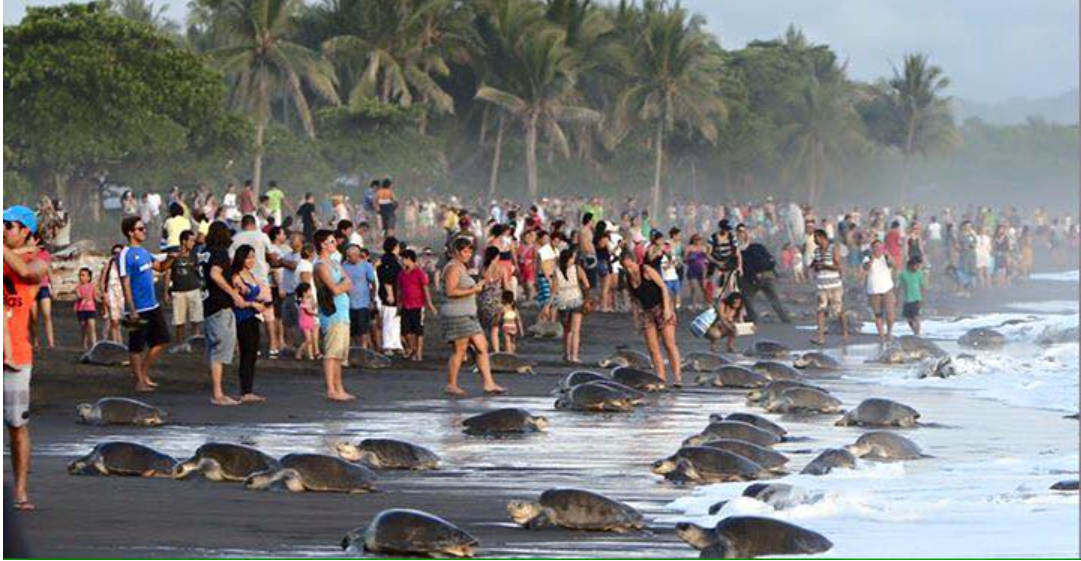In the lush wilderness of Costa Rica, where adventure meets tranquility, the Ministry of Environment and Energy (MINAE) has issued a stern reminder to all visitors: engage in responsible tourism. This appeal comes in the wake of a harrowing incident in Braulio Carrillo National Park, where the Red Cross executed a critical rescue operation. Seven individuals were saved, but the ordeal culminated tragically with the death of a young man, highlighting the dangers of venturing into restricted zones.
The Perils of Uncharted Paths
The allure of Costa Rica’s raw beauty is undeniable, but with its rugged, untamed landscapes comes the responsibility of navigating them safely. Braulio Carrillo National Park, known for its pristine ecosystems and breathtaking vistas, also features terrain that is as treacherous as it is beautiful. Recently, unauthorized excursions into these protected areas have led to dangerous situations, prompting MINAE to tighten regulations and enforce stricter controls.
A Closer Look at the Risks
Visitors to areas like Braulio Carrillo face numerous natural hazards. The park’s volatile volcanic zones, steep slopes, and dense jungles present real risks, including:
- Fumaroles and Phreatic Eruptions: Sudden steam and ash eruptions could occur without warning.
- Gas Inhalation: Volcanic gases are not only unpleasant but can also be harmful or even deadly.
- Geological Instability: Landslides and mudflows are frequent in these mountainous regions, exacerbated by heavy rains and seismic activity.
MINAE’s Response: Legislation and Education
In response to these challenges, MINAE, along with the Central Conservation Area of SINAC (National System of Conservation Areas), has not only ramped up rescue efforts but is also advocating for legislative changes. A new bill proposed by SINAC seeks to introduce hefty fines for those caught entering national parks through non-designated paths. This measure is aimed at deterring the reckless endangerment of both tourists and the delicate ecosystems they visit.
The Role of Guides and Tour Operators
The recent rescue highlighted another significant issue: the role of guides and tour operators in promoting safe tourism. The group’s guide in the Braulio Carrillo incident was reprimanded for leading the excursion into restricted areas, underscoring the need for all tour operators to adhere to established guidelines and respect the boundaries set to protect both natural heritage and visitor safety.
Call to Action for Tourists
MINAE’s message to potential visitors is clear: respect nature’s boundaries. Tourists are encouraged to:
- Plan Ahead: Ensure that your visit is well-planned with respect to authorized trails and sites.
- Stay Informed: Keep abreast of any changes in park regulations and weather conditions that could affect your visit.
- Be Prepared: Equip yourself with appropriate gear for the terrain and climate of the area, and understand the physical demands of your chosen activities.
Reporting and Compliance
To further safeguard its natural treasures, SINAC has set up mechanisms for the public to report illegal activities within protected areas. This includes unauthorized tours and the creation of clandestine trails that could lead to ecological damage. Reports can be made through the designated hotline, 1192, or via SITADA, an online platform aimed at facilitating the surveillance and maintenance of these precious ecosystems.
Embracing Responsible Tourism
As Costa Rica continues to enchant visitors with its unparalleled landscapes and biodiversity, the call for responsible tourism has never been more critical. By respecting the rules and embracing the spirit of preservation, tourists can ensure that these natural wonders remain vibrant and vital for generations to come. Whether you are drawn to the serene beaches, the misty cloud forests, or the majestic volcanic ranges, remember that your actions can either contribute to the conservation of these wonders or to their degradation.
Let your travels through Costa Rica be guided by respect and responsibility, ensuring that the only impact you leave behind is a positive one. As the global community grows more conscious of environmental issues, let Costa Rica be an example of how tourism can be managed sustainably and safely, preserving its magic for the future.

